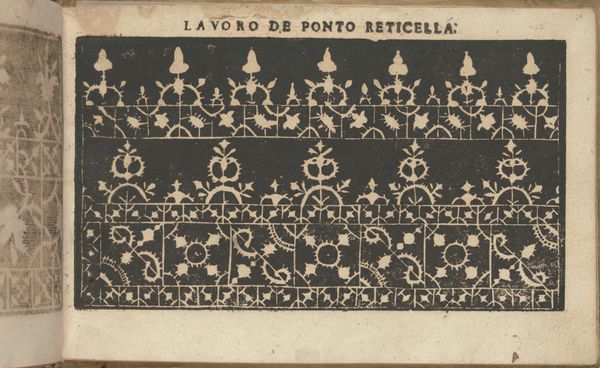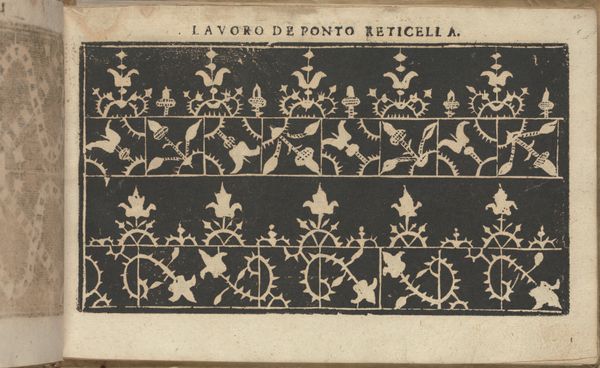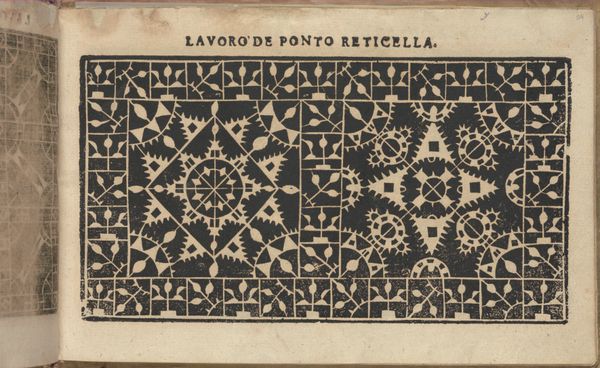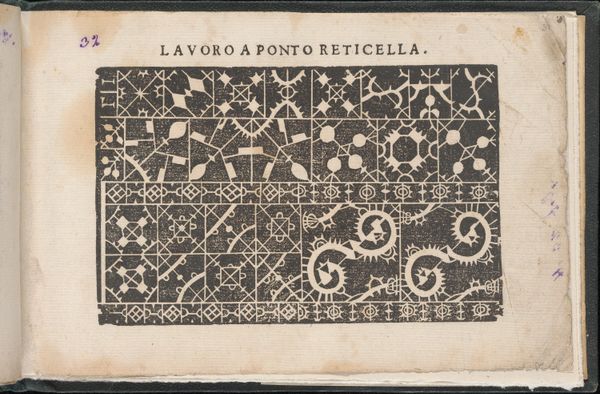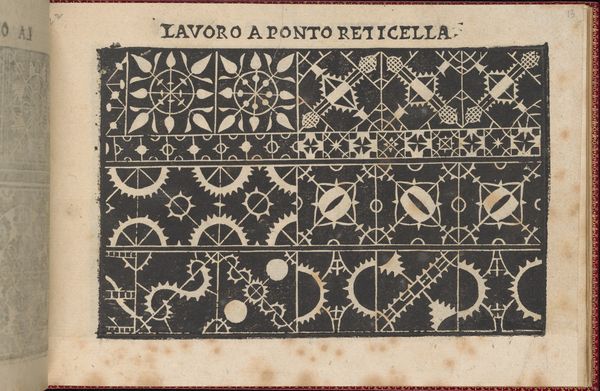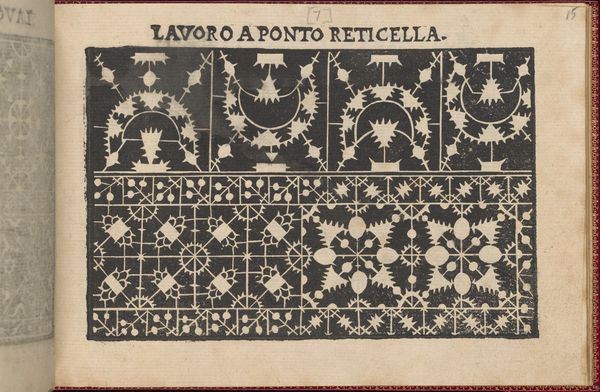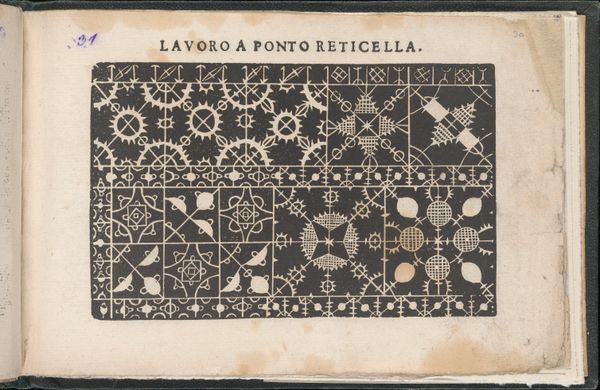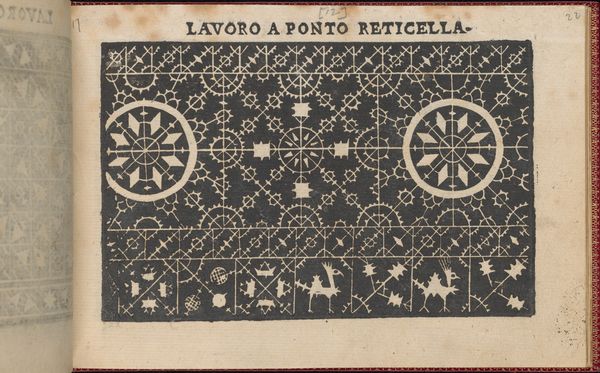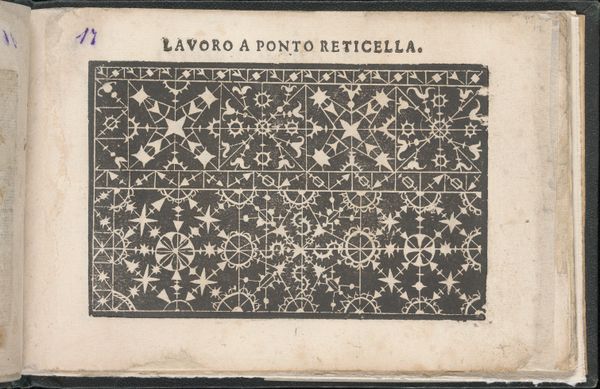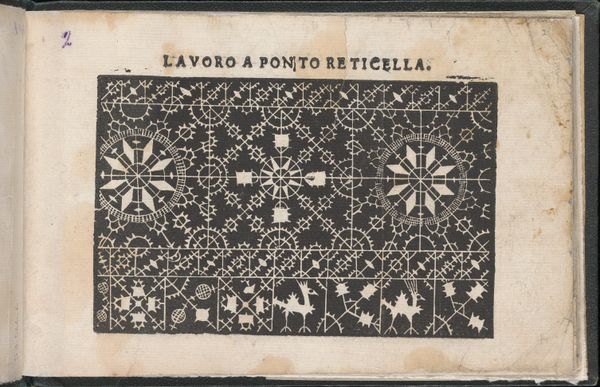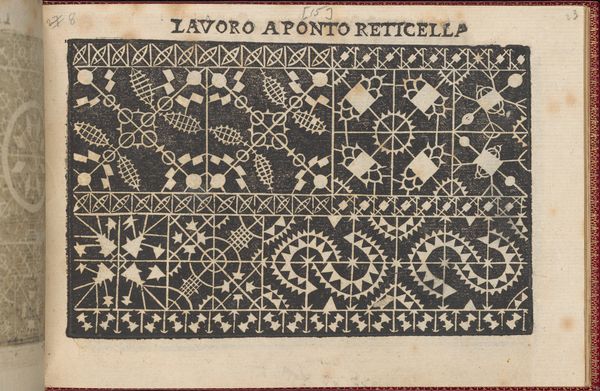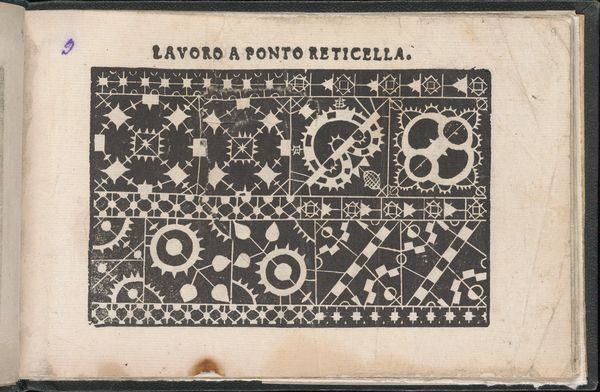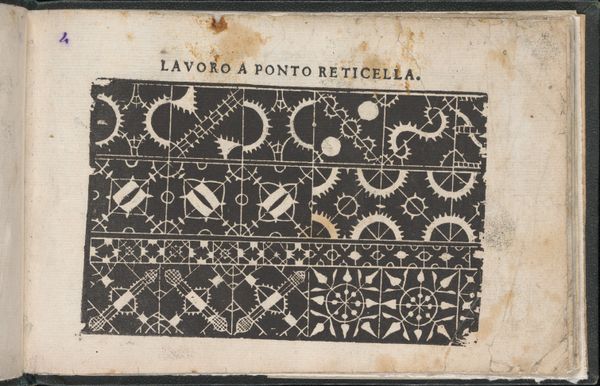
Studio delle virtuose Dame, page 21 (recto) 1597
0:00
0:00
drawing, print, engraving
#
drawing
#
ink paper printed
# print
#
11_renaissance
#
geometric
#
italian-renaissance
#
engraving
#
historical font
Dimensions: Overall: 5 1/2 x 8 1/16 in. (14 x 20.5 cm)
Copyright: Public Domain
Editor: So, this is a page from Isabella Catanea Parasole's "Studio delle virtuose Dame," printed in 1597. It’s an engraving, a kind of manual, demonstrating patterns for lacework. The geometric designs are quite striking. What do you make of it? Curator: This pattern speaks volumes about cultural memory. Look at the symmetry, the repetition of the square and star motifs. Geometric abstraction didn’t originate in the 20th century! What do these forms evoke for you? Consider its context, created during a time when women's artistry was often confined to the domestic sphere. Editor: Well, the repeated shapes remind me of heraldry, or even simple star charts. Is that intentional? Curator: Indeed. There is a long association between geometric forms and systems of knowledge. It's no coincidence that lacework patterns share visual DNA with maps, cosmological diagrams, and even family crests. It is like weaving the cosmos into something domestic. And "Ponto Reticella," the needle lace, was often used for decorating the clothing of royalty or religious regalia. Does knowing this change your perception? Editor: Yes, definitely. It makes me consider who wore clothing made with such painstaking skill and also, what it meant to wear it. It also brings to light the complex cultural context. Curator: Precisely. This design serves not just as a pattern, but also as a conduit. By preserving geometric forms and integrating these patterns into the cultural realm, Parasole subtly empowers the user. It links them to a lineage, and perhaps to aspirations beyond the merely functional. Editor: It’s fascinating to see how this seemingly simple lacework design can be interpreted through layers of history, symbolism, and cultural context. I will never see lace in the same way.
Comments
No comments
Be the first to comment and join the conversation on the ultimate creative platform.
